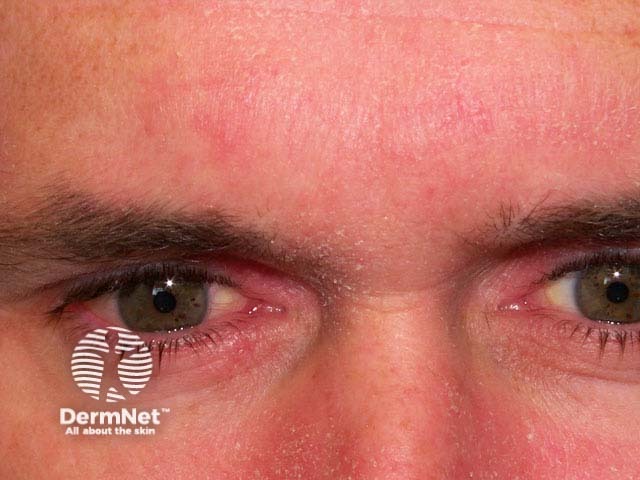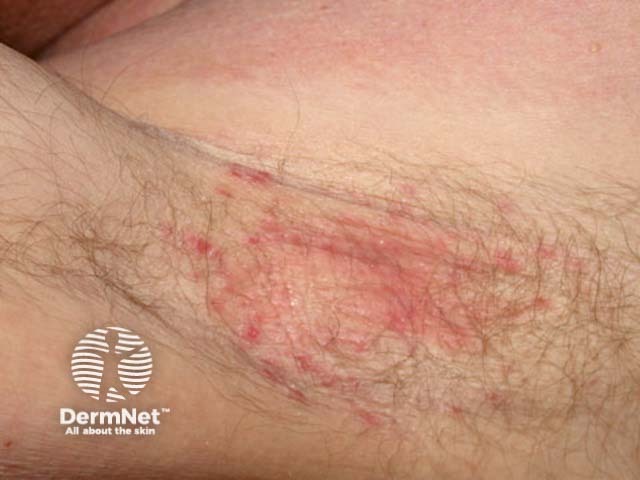Main menu
Common skin conditions

NEWS
Join DermNet PRO
Read more
Quick links
This quiz will test how good you are at diagnosing skin conditions due to fungi, bacteria and viruses.
For each of the ten cases, study the image(s) and then answer the questions. You can click on the image to view a larger version if required.
Each case should take approximately 2 minutes to complete. There is a list of suggested further reading material at the end of the quiz.
When you finish the quiz, you can download a certificate.


What is the diagnosis?
Seborrhoeic dermatitis, now thought to be caused by irritating substances produced by malassezia yeasts.
Describe the clinical features of this disorder.
Seborrhoeic dermatitis presents as a chronic scaly rash in adolescents and adults of all ages. It favours certain skin flexures especially nasolabial fold, postauricular fold, axillae and groin. It also affects the scalp, other hair bearing areas especially eyebrows, moustache, eyelid margins (blepharitis), upper back and chest. Characteristically, the scale is yellowish and greasy or white and bran-like and is associated with round or annular pink patches. Itching tends to be absent or mild. Symptoms are sometimes aggravated by climatic changes or stress.
Which laboratory tests are helpful, if any?
The diagnosis of seborrhoeic dermatitis is nearly always made clinically. Occasionally skin scrapings may be taken. In some patients, microscopy may reveal malassezia yeasts. Culture is usually negative. Biopsy of seborrhoeic dermatitis shows eczematous and psoriasiform features.
What treatment would you recommend?
Tell your patients to cleanse the face twice daily with mild soap or non-soap non-cream cleanser and water. Unlike atopic dermatitis, emollients are not helpful and may in fact aggravate seborrhoeic dermatitis. Patients often demand them however to relieve dryness and stinging; recommend they choose non-oily products including sunscreens.
Seborrhoeic dermatitis is generally treated with a combination of topical antifungal creams and intermittent low potency topical steroids. Ketoconazole or ciclopirox creams may be effective on their own. Antifungal shampoos can be used to cleanse affected areas twice weekly. Keratolytics such as salicylic acid, sulphur, and tar preparations are very helpful for the scalp but are too irritating for facial use.